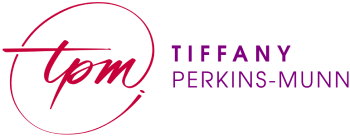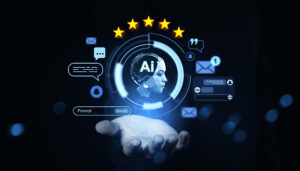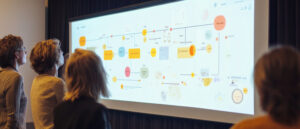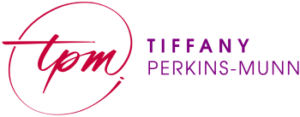Are you making the most of today’s top productivity tools? Which productivity tools can help reduce burnout instead of adding more tasks? How do productivity tools like Grammarly, Calendly, or Otter.ai actually improve the quality of your workday?
In a world where our to-do lists never seem to end, the right productivity tools can help us work smarter, not harder. This blog explores practical, low-effort tools that enhance communication, simplify scheduling, and bring clarity to decision-making. Whether you’re leading a remote team or managing your own workload, tools like Grammarly, Calendly, and Otter.ai are transforming everyday challenges into seamless workflows.
But it’s not just about automation and efficiency. True productivity means aligning your work with what energizes and fulfills you. With smart, intention-driven use of productivity tools, we can create workflows that reduce friction and increase focus, freeing up more time for what matters most. From AI-enhanced writing aids to powerful data visualization platforms like Tableau, this post offers a thoughtful guide to choosing tools that actually support better work.
We live in a world that’s constantly “on.” Whether it’s at work or in our personal lives, we’re often busy, overbooked, and navigating mile-long to-do lists that never quite seem to get fully completed.
Take a look at the workplace, for example. Whether working remotely or commuting to the office, as soon as you log onto your computer, you’re likely hit with a barrage of calendar invites, team chats, and an overflowing email inbox. It seems we’re constantly trying to find ways to get more done effectively and productively. There are countless hacks and tips out there for improving productivity and efficiency at work, like time blocking or setting specific “do not disturb” filters on your phone or computer during times when you’re trying to focus.
But productivity isn’t just about checking boxes faster. It’s about working smarter, with more intention and less burnout.
Over time, and with a lot of trial and error, I’ve learned that how we work is just as important as what we’re working on or why we’re working on it in the first place. And one of the most powerful ways to elevate how we work without overhauling our routines is through the thoughtful use of digital tools.
Especially now, as artificial intelligence and automation evolve at lightning speed, there’s an incredible opportunity to streamline the tasks that drain our energy and refocus on the work that lights us up. In this blog, I’m sharing some of the productivity tools I rely on and often recommend to other data scientists and business leaders to create more space, flow, and clarity in their workday.
Table of Contents:
Grammarly: Elevating Written Communication
Calendly: Simplifying Scheduling Logistics
Tableau: Transforming Data into Actionable Insights
Otter.ai: Taking the Pain Out of Meeting Notes
- Notion: Your Team’s Shared Brain
- Trello or Asana: Visual Task Management
- Zapier: Automate the Repetitive
Grammarly: Elevating Written Communication
Effective communication is essential whether you’re a founder pitching a new start-up, a team leader reviewing reports, or simply replying to an email. How we express ideas, especially in writing, shapes how we’re perceived, understood, and trusted.
Grammarly is one of the best productivity tools for ensuring clear and professional written communications. It’s way more than just a spell checker. It’s like having a smart, supportive editor looking over your shoulder at all times. In fast-paced work environments, that kind of assistance can be the difference between a message that gets ignored and one that inspires action.
We all know how embarrassing it can be to send an email and notice a typo as soon as you click send. Grammarly exists to help prevent that feeling with real-time grammar and syntax suggestions, but it goes far beyond just catching typos. It helps with tone (are you sounding too harsh? Too vague? Not confident enough?), clarity (are you rambling?), and even formality (is this email too casual for your client?) Its readability score is also especially helpful when writing team updates, proposals, or public content, ensuring your message is as clear as your intention.
Personally, my favorite part of using this tool is that it’s relatively low-effort. It seamlessly integrates with the tools you’re already using, including Slack, the entire Google Suite, Microsoft Office, and more. That means you don’t have to toggle between multiple platforms or apps.
People who use Grammarly see 85% fewer writing errors, and 81% of users say that relying on the tool has helped enhance their writing skills and academic or professional performance. Moreover, believe it or not, 80% of people who use Grammarly also report a boost in their confidence in writing and communicating.
Calendly: Simplifying Scheduling Logistics
Most of us have regular, even daily, meetings to attend throughout the work week. The most exhausting part of those meetings isn’t even the meeting itself; it’s the scheduling. Trying to find a time that works for everyone feels like jumping through hoops.
“Does Thursday at 3 p.m. work?”
“Actually, I’m in another meeting then. How about Friday morning?”
“I’m traveling then. What about next week?”
This back-and-forth is largely unnecessary, though, because productivity tools like Calendly exist to automate the scheduling dance. Instead of the back-and-forth, you just send the person a Calendly link, where they’ll pick a time that works for them based on your availability that you outline ahead of time on your end of the platform, and voila, you’re booked. No more double-booking or long email threads to find a time for a 30-minute call. It’s all scheduled in a matter of minutes.
Productivity tools like Calendly are an absolute must for remote and hybrid teams. It integrates with major calendar apps (Google, Outlook, iCal) and can even auto-detect time zones—perfect for coordinating across global teams. You can set parameters for when you’re available, include buffer times, and even add questions for invitees before the meeting.
Tableau: Transforming Data into Actionable Insights
We live in a data-rich world, but not everyone feels fluent in data. And that’s a problem because great decisions require more than just gut instinct. They need context, patterns, and clarity that only data can provide.
This is where Tableau shines. It helps turn raw numbers into visual, interactive, and intuitive stories that people can use to take action.
You don’t need to be a data scientist to use Tableau. Its drag-and-drop dashboards make it easy to explore insights, track KPIs, or present performance metrics in a compelling, visual format. Whether you’re analyzing marketing data, team performance, or financials, Tableau helps you spot the trends and tell the story. It’s incredibly user-friendly, making it a go-to tool for students, armchair data scientists, and professional analysts alike.
And it’s not just static reporting. Tableau’s AI-powered features suggest insights, forecast trends, and even help you ask better questions about your data. It integrates seamlessly with tools you already use, such as Excel, Google Sheets, and SQL databases, so that you can stay in the flow.
For founders and team leads, Tableau has become a way to bring people into the data conversation, not just analysts but stakeholders across the business. When people understand the “why” behind the numbers, they make better decisions and take more ownership of results. Think of it as a tool to make data more accessible to the masses, not just the few with some kind of tech degree.
Otter.ai: Taking the Pain Out of Meeting Notes
You’re not alone if you’ve ever been in a meeting where you were so focused on taking notes that you missed the actual conversation. You want to be engaged in the discussion, but you also want to make sure you’re writing down everything important, and you can’t necessarily pause or rewind the meeting.
Otter.ai is an excellent tool for solving this problem. It records and transcribes meetings in real-time, identifying who’s speaking, creating a searchable transcript, and even generating automatic summaries of what was said. Whether you’re on Zoom, Google Meet, or Teams, Otter.ai syncs up and captures everything.
This means you can be fully present in the meeting, listening, engaging, and asking thoughtful questions instead of frantically typing or scribbling notes. Afterward, you can revisit the transcript, search for key takeaways, or share the summary with teammates who couldn’t attend.
I’ve seen this productivity tool in practice in real-time during meetings, and it’s incredibly valuable. It reduces post-meeting workload, ensures nothing gets lost, and helps align teams faster. It also keeps everyone focused during the meeting time, ensuring each person can engage and participate fully.
Digging a little deeper, Otter.ai is also one of those productivity tools that can improve equity and inclusion. No matter how you process information, or how fast, everyone can revisit the conversation later to review what was said, catch up, and get on the same page as the rest of the team.
Extra Tools to Try
Those are just four of the productivity tools that are staples in my digital toolkit. They also come highly recommended by other business leaders working with teams of all types, whether remote, in-office, or hybrid. But those aren’t the only tools worth exploring. There are several others that could benefit your workflow depending on your role, work style, and your team’s needs. Here are just a few to check out:
- Notion
- Trello or Asana
- Zapier
1. Notion: Your Team’s Shared Brain
Notion is a flexible, all-in-one workspace perfect for centralizing company and department knowledge, managing projects, taking notes, and documenting workflows. Think of it as the digital equivalent of a well-organized office cabinet, with everything in its place, accessible to everyone who needs it.
It’s ideal for asynchronous work, team collaboration, and personal productivity purposes. With customizable templates and integrations, Notion is what you make of it, which is exactly why I love it.
2. Trello or Asana: Visual Task Management
These tools will speak your language if you think in sticky notes or Gantt charts. Trello uses a visual card-based system, which is great for project timelines and creative collaboration. Asana is more structured, offering timelines, workflows, dependencies, and visual deadlines that help teams stay on track, especially for complex or multi-stage projects.
These tools operate very similarly, and their main draw is that they make work visible, which is key to reducing ambiguity and improving accountability. Everyone knows what’s happening, who’s responsible, and what’s next. For remote and hybrid teams who might not have a collective office space where everyone can see the tasks currently being worked on, these productivity tools are essential for ensuring all tasks are organized and completed on time.
3. Zapier: Automate the Repetitive
This one’s for the efficiency nerds, particularly those interested in working more with automation technology. Zapier connects your favorite apps and automates repetitive tasks, like saving email attachments to Dropbox, adding meeting notes to Slack, or syncing Google Form responses to a spreadsheet.
It’s low-code, surprisingly fun to use, and a secret weapon for solo founders or small teams that want to operate like a much bigger company. It keeps everything connected and streamlined from point A to point Z.
Conclusion
The beauty of today’s technology is that it can help us be more effective, not just more efficient. It gives us the power to redirect time and energy and focus on what we do best and what fulfills us most.
But these productivity tools are only as powerful as the habits, boundaries, and values that guide how you use them. It’s essentially up to you to determine how well these tools work or if they even work for you at all.
A polished email is still rooted in clarity of purpose. An empty calendar slot still requires you to decide whether it’s filled with a focused work session, a coffee break, or a 20-minute walk around the block. A beautiful data visualization dashboard only matters if you’re willing to pause and ask, “What is this data trying to tell me about where we go next?”
As AI, automation, and digital platforms continue evolving, we’ll only see more tools that promise to save time, boost productivity, and reduce overwhelm. Some will. Some won’t. But if we lead with intention, we can build a working life that’s not just productive but meaningful. One that aligns with who we are and what we care about.
So, as you evaluate your current workflow to see where some of these productivity tools could make a positive impact, take a moment to ask yourself:
- What are the small daily frictions I’ve just accepted but could eliminate?
- What kind of work energizes me, and what drains me?
- Which tools actually support me, and which ones just add noise?
Start there. Aim to simplify and streamline, but don’t be afraid to experiment, as there is a vast array of digital tools out there to choose from.
Most importantly, when we talk about using productivity tools, keep in mind that the goal isn’t just to do more; it’s to create space and time for the things that matter most. And sometimes, all it takes is the right tool, applied with the right intention, to open that door.








